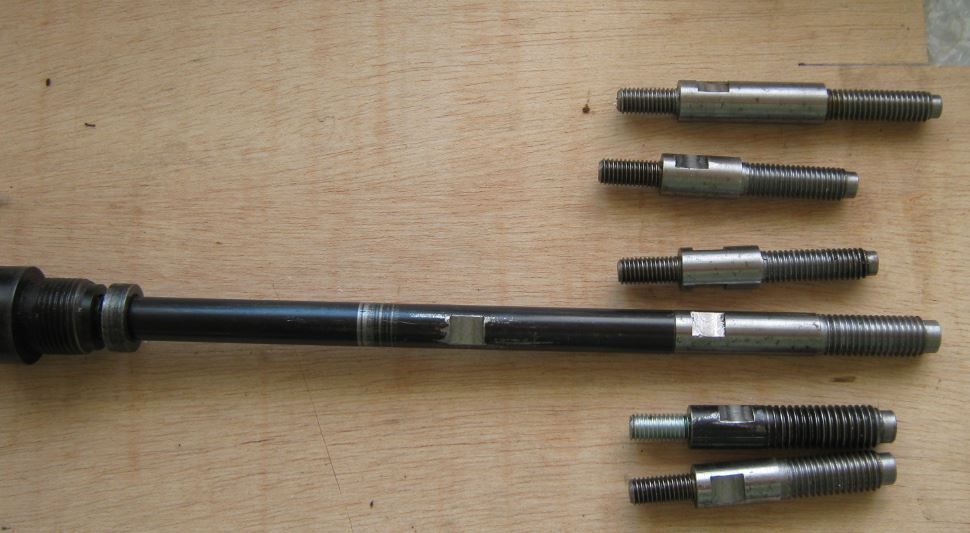I have a MT3 arbor tapped to M12 thread which must be modified to 1/2" BSW 12 tpi to match the drawbar in my milling machine.
The drawbar cannot be changed as it is captive in the machine and it also expels the arbour when loosened. The manual for the machine (a Steinel) specifically states that the drawbar is to be nipped up by finger pressure only and not overtightened, so the new thread shouldn't be too stressed.
Option 1 would be to use a helicoil repair kit, costing near £23 from Chronos. This doesn't seem too bad as M12 is much more common as a drawbar thread so I'll probably use it several times. My concern with this method is that after drilling out for the helicoil tap there won't be much metal left at the top of the taper on the arbor, and the insert would need to be right at the top because the drawbar only engages about half an inch into the arbor. If the helicoil insert was to pop out stuck to the drawbar it would be a catastrophe and necessitate stripping down the whole head to repair. OK maybe not a catastrophe, but certainly a disaster. Everything's relative of course…
Option 2 might be to fill the threaded hole in the arbor with brazing rod, then drill it and tap it. Would the braze be strong enough for the drawbar? Would this even work?
Option 3 would be to MIG weld the threaded hole to then drill and tap. But would this harden the steel of the arbor so that it couldn't be machined?
Your advice and suggestions would be most gratefully received!
Steve
Edited By SteveM on 29/08/2015 00:50:22
SteveM.






